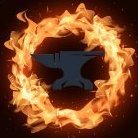Switching facing texture of a block
-
Recently Browsing
- No registered users viewing this page.
-
Posts
-
By FinnTHEHUMANOID · Posted
internal exception: java.lang.nullpointerexception: cannot invoke "net.minecraft.nbt.compoundtag.m_128459_ (string ) because nbt is full This is on aternos 1.19.2 my mods are the following: antlers the wendigo arthropod phobia expansions born in chaos from the fog geckolib jei siren head the arrival the box of horrors the John reborn the man from the fog the man from the shadow the newest goatman the silence please help, thank you! -
By FinnTHEHUMANOID · Posted
internal exception: java.lang.nullpointerexception: cannot invoke "net.minecraft.nbt.compoundtag.m_128459_ (string ) because nbt is full my mods are the following: antlers the wendigo arthropod phobia expansions born in chaos from the fog geckolib jei siren head the arrival the box of horrors the John reborn the man from the fog the man from the shadow the newest goatman the silence please help, thank you! -
By mckiller1195 · Posted
the only mods I have installed are mouse tweaks and OptiFine log: https://pastebin.com/3ZGb6LaH -
By TheCursedModder · Posted
Forge is probably the most feature loaded mod loader currently. You can change just about anything with the game mechanics by using mixins. You can also add more items and feature than what the docs show you. It is good to start with a Modding tutorial series like this one by Kaupenjoe. Some good examples of what is possible with forge is clockwork, dynamic trees, and I guess create but its on fabric too.
-
-
Topics
-
Who's Online (See full list)


Recommended Posts
Join the conversation
You can post now and register later. If you have an account, sign in now to post with your account.
Note: Your post will require moderator approval before it will be visible.